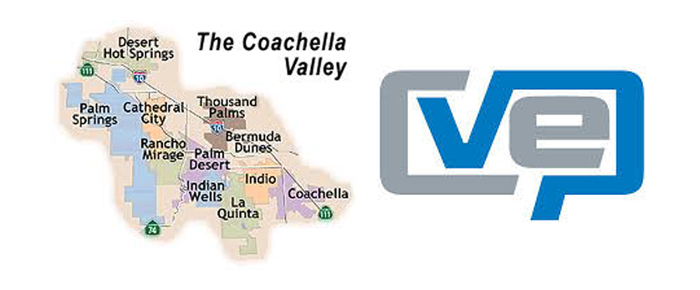
By Haddon Libby
On December 18th, the Coachella Valley Economic Partnership (“CVEP”) had a half-day stakeholder session at the Renaissance Esmeralda Hotel in Indian Wells. The meeting was the first of many in determining the Economic Blueprint from which they will base their activities for the five year period beginning in 2014.
In case you were unaware, CVEP’s mission is to market, facilitate and provide information to its clients, investors and the Coachella Valley in its efforts to foster economic development in our region. Two key objectives at CVEP are to educate low income youth while expanding new, higher paying jobs to the Coachella Valley.
As was discussed on the 18th, the true unemployment rate in the Coachella Valley is approximately 26% with some areas in the valley having unemployment levels nearing 40%. These startling statistics make the Coachella Valley one of weakest areas for employment in the United States.
During break-out sessions, participants pointed out that a highly skilled labor force is critical to attracting businesses to the region – something the Coachella Valley is lacking. Without this pool of talented workers, the Coachella Valley is forced to compete with other regions for businesses looking to move their locations. This is a significant challenge in that we do not have the economic incentives that other places are able to offer. Making things worse, California is considered one of the least business friendly places in the nation. Having these major strikes against our region, the Coachella Valley has fewer ways to compete for new jobs.
While well intentioned, the economic blueprint that was written in 2009 focused on economic diversification into Healthcare, Logistics, Clean Technology and the Creative Arts. The thought was that by focusing on these sectors, we could bring higher wage jobs to the region. The challenges of a lowly skilled workforce and a lack of tax incentives or other business relocation inducements caused challenges in attracting any substantive growth of employment opportunities in these business sectors.
As the blueprint is meant to focus on the next five years while setting a tone for future years, participants at the December 18th meeting brought a more somber approach toward ideas for increasing employment. Generally speaking, attendees seemed to coalesce around a need to add to the blueprint business sectors where the Coachella Valley already exhibits strength – namely agriculture, tourism and hospitality.
It was noted that much of the produce created in the Coachella Valley is harvested and shipped to Central California for processing before being shipped back to the Coachella Valley for consumption. What would happen if we were able to process that food locally and/or create value added end products?
Another area where the region has not protected its strength is tourism. As has been noted by hoteliers and restaurateurs alike, the typical local worker is not on par with other destination locations.
From a political standpoint, the Coachella Valley needs to stand united in supporting the agriculture and tourism industries. As these business segments are not significant to the rest of Riverside County, if our region is not united in its vocal support of these business types, Riverside County will not be vocal on our behalf when it comes to the deployment of state or federal funds.
CVEP will be holding additional meetings with the public over the next few months as it looks toward getting the support of business, workers and the unemployed alike in the construction of the blueprint which will lead us into the next decade. Greater participation will be sought as only five local businesses were in attendance of which none were in the agricultural industry and few were in tourism.












































